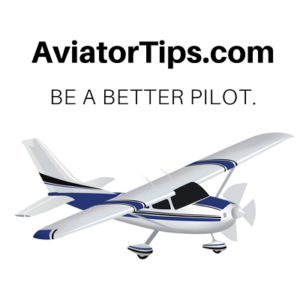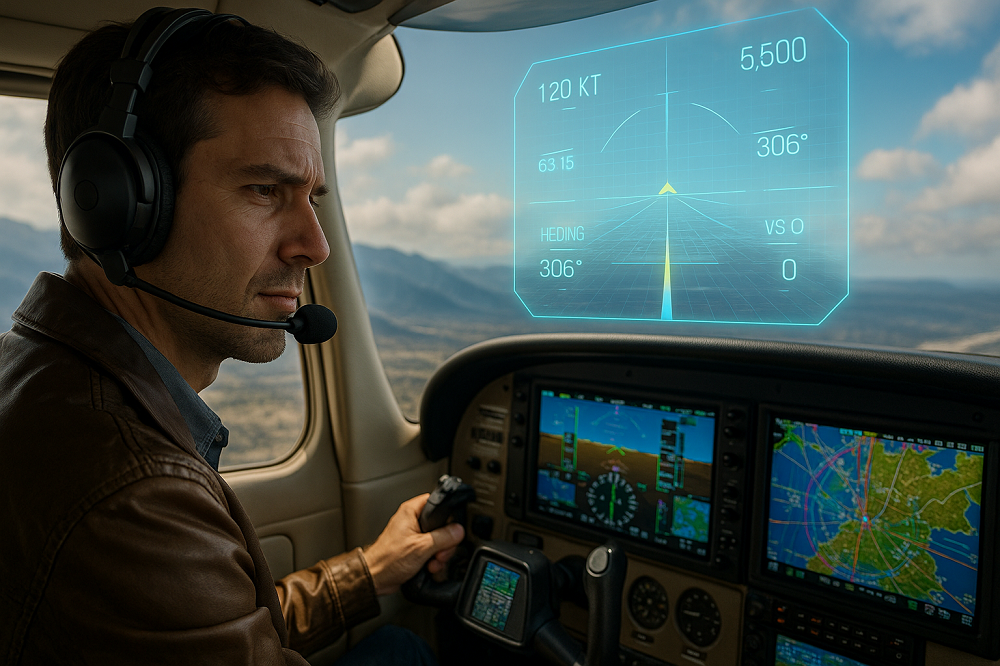Augmented reality (AR) might sound like something from a futuristic movie, but it is already starting to reshape the world of aviation. For student pilots and newly certified private pilots, AR offers exciting possibilities for learning, flying, and decision-making. From training simulators to in-flight navigation, augmented reality is becoming a powerful tool in the cockpit.
What Is Augmented Reality?
Augmented reality is a technology that overlays digital information, such as text, graphics, or data, onto the real-world environment. Unlike virtual reality, which places users in a fully simulated world, AR adds information to what you are already seeing.
In aviation, this could mean:
- Showing runway outlines on a heads-up display (HUD) as you approach for landing
- Highlighting terrain or obstacles through your headset during flight
- Overlaying instrument data on a transparent visor
- Visualizing aircraft traffic or weather on your windshield
AR systems use sensors, cameras, GPS, and onboard data to understand where you are and what you are looking at, then display the relevant information in real time.
How AR Is Being Used in Pilot Training
Augmented reality is beginning to play a significant role in how pilots learn, especially during early flight training and ground school. Here are some of the key ways AR is used to enhance the learning process:
1. Ground School Visualization
AR headsets or tablet apps can bring ground school lessons to life by turning static concepts into interactive models. For example:
- Airspace structures can appear as 3D towers and rings
- Aerodynamic forces can be shown on a virtual wing
- Weather systems can be visualized as moving air masses
This approach makes it easier to grasp spatial relationships, system flows, and invisible concepts like lift or pressure gradients.
2. Preflight Walkarounds and Aircraft Familiarization
New students can use AR to perform virtual walkarounds of aircraft. Using a phone or headset, they can:
- Identify key parts of the airplane
- Get explanations of control surfaces and engine components
- Practice inspection steps with visual cues and checklists
This builds confidence and familiarity before stepping into the real cockpit.
3. Procedural Training
AR can simulate startup sequences, radio procedures, and emergency checklists. Trainees can interact with a virtual cockpit overlaid on a physical panel or table, learning button locations and flows before their first flight.
This kind of muscle memory training improves retention and makes the transition to the real aircraft smoother.
4. Instructor Supervision in Simulators
Some flight simulators use AR to allow instructors to overlay guidance in real time:
- Marking where to look
- Displaying traffic or hazard warnings
- Highlighting the glidepath during landing practice
This helps students correct errors early and understand spatial relationships more clearly.
How AR Is Being Used in the Cockpit
AR is not just a training tool. It is making its way into real-world flying through advanced displays and connected systems. Some of these innovations are already available in high-end general aviation aircraft, and more are expected soon.
1. Heads-Up Displays (HUDs)
HUDs project key information like airspeed, altitude, attitude, and navigation cues onto a transparent screen in front of the pilot’s eyes. Some systems now include synthetic vision and AR overlays that:
- Show runway outlines
- Highlight terrain features
- Display traffic position symbols
- Indicate waypoints or flight paths
This allows pilots to keep their heads up and eyes outside while still monitoring important data.
2. Smart Glasses and AR Headsets
Developers are testing wearable AR devices that let pilots see critical data without looking down at the panel. These devices can:
- Provide real-time traffic alerts
- Highlight restricted airspace boundaries
- Show engine parameters in a corner of the display
This may reduce workload and improve situational awareness, especially in single-pilot operations.
3. Emergency and Low-Visibility Guidance
AR can be a major help in low-visibility conditions, even for VFR pilots. Some systems can:
- Project an overlay of the runway in fog or haze
- Indicate glide slopes visually during emergency landings
- Show power-off descent paths after an engine failure
These tools may become valuable for enhancing safety when visual cues are degraded or unavailable.
4. Terrain and Obstacle Awareness
AR can highlight terrain contours and obstacle locations based on GPS, altitude, and chart data. This helps reduce the risk of controlled flight into terrain (CFIT), especially at night or in mountainous areas.
Combined with GPS and synthetic vision, AR turns your windshield into a safety-enhancing navigation display.
Benefits of AR in Pilot Training and Flying
1. Better Visualization
AR brings spatial and abstract concepts to life. This helps student pilots understand topics like navigation, aerodynamics, and airspace faster and more clearly.
2. Faster Learning and Skill Retention
When you can practice procedures interactively and repeatedly in a low-pressure environment, you retain skills better and develop confidence sooner.
3. Increased Safety
Real-time overlays and alerts can prevent common mistakes, such as entering the wrong airspace, missing a checklist step, or descending below the safe altitude.
4. Enhanced Situational Awareness
By layering helpful information over what you already see, AR reduces the need to scan multiple displays. This frees up attention for monitoring traffic, weather, and your surroundings.
Challenges and Limitations
As with any new technology, AR comes with limitations that pilots should keep in mind:
1. Distraction Risk
Poorly designed AR systems could add clutter or overwhelm pilots with too much information. Interfaces must be intuitive and non-intrusive.
2. Reliability and Power
AR systems rely on hardware that must be charged, maintained, and updated. Like any electronic tool, they can fail and should not replace core flying skills.
3. Cost and Access
Most AR tools are still in the development or early adoption phase. They may be limited to flight schools or high-end aircraft for now, though consumer-level apps are emerging.
4. Training the Right Way
Students must still learn to fly using visual references and traditional instruments. AR should support, not replace, fundamental pilot skills like scanning, communication, and judgment.
What Student and Private Pilots Should Focus On
If you’re new to flying and want to get started with AR, here are some smart steps to take:
- Explore AR training apps: Look for aviation-specific apps that demonstrate airspace, navigation, or aircraft systems using augmented visuals.
- Use EFB features with overlays: Apps like ForeFlight and Garmin Pilot are adding AR-based tools for identifying airports and terrain.
- Ask your flight school: Some schools may offer AR-based preflight or procedural training as part of their curriculum.
- Stay informed: Keep an eye on emerging tech like HUDs and smart glasses, especially as they move into general aviation.
- Practice the basics: Use AR as a supplement, not a crutch. Keep building your stick-and-rudder skills.
Final Thoughts
Augmented reality is making its way into aviation faster than many expected. It is not just for fighter jets or commercial cockpits anymore. Student pilots and private pilots are beginning to benefit from AR in training, situational awareness, and even real-time flight guidance.
As AR becomes more affordable and accessible, it will likely become a normal part of flight training and cockpit technology. The pilots who understand how to use it effectively, without becoming dependent on it, will be better prepared, more efficient, and ultimately safer in the air.
Stay curious, explore the tools, and keep learning. AR may not replace airmanship, but it can certainly help you become a better pilot.
Sources:
– FAA: *Aviation Training and Simulation Tools*
– Garmin: *HUD and Synthetic Vision Integration*
– MIT Technology Review: *AR in Aviation Training*
– NASA: *Augmented Reality for Aerospace Applications*
– AOPA: *Emerging Tech in the Cockpit*
Recent Posts
FAA MOSAIC Final Rule: What Pilots, Manufacturers, and the Aviation Community Need to Know
Learn how the FAA’s MOSAIC final rule revolutionizes Light-Sport Aircraft certification, expands Sport Pilot privileges, and reshapes general aviation. See what’s changing, when it takes effect,...
Student Pilot Insurance: Essential Coverage for Aspiring Flyers
Discover how student pilot insurance can protect your flying dreams. Get expert tips and coverage options to ensure your safety and peace of mind.


